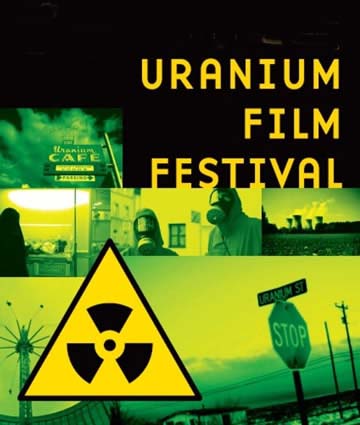Drone to Measure Radiation inside Fukushima Daiichi Reactor and Turbine Buildings
 This drone will be used to measure radiation inside the reactor and turbine buildings at the meltdown-hit Fukushima No. 1 power plant.
This drone will be used to measure radiation inside the reactor and turbine buildings at the meltdown-hit Fukushima No. 1 power plant.
Drone to measure radiation in tainted Fukushima No. 1 buildings
Tokyo Electric plans to measure radiation in heavily contaminated buildings at the Fukushima No. 1 power plant as it prepares to decommission its damaged reactors, officials at the utility said.
The data from the drone is expected to help Tokyo Electric Power Company Holdings Inc. create 3-D maps and identify areas of high radiation that workers should avoid.
The drone, 93 cm wide and 83 cm long, has four propellers and can fly for around 15 minutes. Tepco, as the struggling utility is known, expects to use it in the reactor buildings and the turbine buildings.
In February, Tepco tested a drone in the turbine building for the No. 3 reactor, one of three that experienced meltdowns after the March 2011 earthquake and tsunami.
After improving its performance, it decided to use the drone to gauge radiation but it is still deciding where to start, the officials said.
The government and Tepco want to start debris extraction work in 2021 and are in the process of determining a specific approach for removing the molten fuel from each reactor and updating the decommissioning road map.
Drone to measure radiation inside tainted Fukushima plant buildings
TOKYO (Kyodo) — The operator of the crippled Fukushima Daiichi nuclear power plant is planning to use a drone to measure radiation inside heavily contaminated structures as it prepares to decommission damaged reactors there, according to officials of the operator.
Data obtained from its use is expected to help the operator, Tokyo Electric Power Company Holdings Inc., create 3-D maps and identify areas with high-level radiation inside buildings where workers cannot stay safely.
The drone envisioned for the task is 93 centimeters wide and 83 cm long, and, equipped with four propellers, can fly for around 15 minutes. The operator envisions its use inside buildings that house damaged reactors and inside those housing turbines.
In February Tepco, as it is known, tested a drone inside the turbine building for the No. 3 reactor, one of three reactors that experienced meltdowns in the March 2011 earthquake and tsunami.
After improving its performance, the plant operator has decided to put the drone into use for radiation measurement. But it is still considering where it should begin using the machine, according to the officials.
The government and Tepco are aiming to start debris extraction work from 2021, and are currently in the process of determining a specific approach to removing melted fuel from each damaged reactor and of updating their decommissioning road map.
http://mainichi.jp/english/articles/20170910/p2g/00m/0dm/008000c
No comments yet.
-
Archives
- May 2024 (12)
- April 2024 (367)
- March 2024 (335)
- February 2024 (345)
- January 2024 (375)
- December 2023 (333)
- November 2023 (342)
- October 2023 (366)
- September 2023 (353)
- August 2023 (356)
- July 2023 (362)
- June 2023 (324)
-
Categories
- 1
- 1 NUCLEAR ISSUES
- business and costs
- climate change
- culture and arts
- ENERGY
- environment
- health
- history
- indigenous issues
- Legal
- marketing of nuclear
- media
- opposition to nuclear
- PERSONAL STORIES
- politics
- politics international
- Religion and ethics
- safety
- secrets,lies and civil liberties
- spinbuster
- technology
- Uranium
- wastes
- weapons and war
- Women
- 2 WORLD
- ACTION
- AFRICA
- Atrocities
- AUSTRALIA
- Christina's notes
- Christina's themes
- culture and arts
- Fuk 2022
- Fuk 2023
- Fukushima 2017
- Fukushima 2018
- fukushima 2019
- Fukushima 2020
- Fukushima 2021
- general
- global warming
- Humour (God we need it)
- Nuclear
- RARE EARTHS
- Reference
- resources – print
- Resources -audiovicual
- World
- World Nuclear
- YouTube
-
RSS
Entries RSS
Comments RSS




Leave a comment